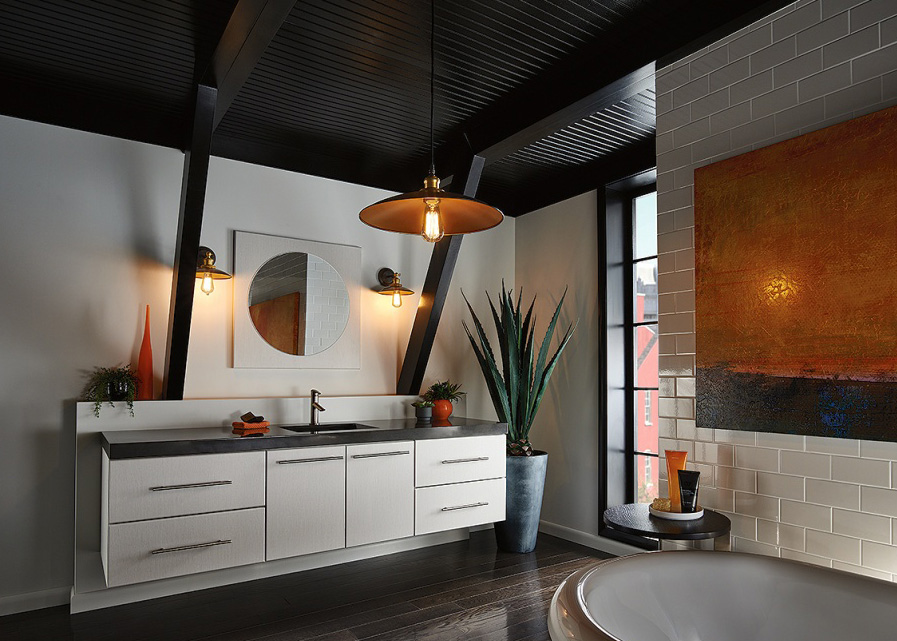If you have a light fixture that emits a buzzing sound, you could find that the persistent hum is annoying and distracting. There is also the possibility that the light fixture, the bulb, or the switch are defective in some way.
A buzzing light fixture may have an effect on numerous kinds of lighting, including incandescent, fluorescent, compact fluorescent, and LED lights. There might be a variety of reasons for this, including mismatched dimmer switches and light bulbs, as well as outdated light ballasts that require replacement. You can take care of the majority of these buzzing issues with the light fixture by yourself.
If you hear a crackling or sizzling sound, switch off the circuit breaker and contact an electrician as soon as possible. If fixing the bulb or switch on a light fixture doesn’t stop the noise coming from it, it could be a sign of bigger problems that need the help of an electrician.
The LED light fixture is making a buzzing sound.
The buzzing or humming sound that may be heard coming from LED light fixtures is typically the result of a mismatch between the LED light and the dimmer switch. In most cases, this does not pose a risk.
Test whether the LED Dimmer is causing the buzzing.
The easiest technique to determine whether or not the buzzing is caused by the dimmer switch is to briefly remove the light from the dimmer switch and listen for any changes. To do this, one strategy involves turning off the circuit breaker, removing the wiring from the dimmer, and then connecting the wires to a standard switch that does not have a dimming function. Another option is to keep the dimmer switch where it is but connect the two hot wires (often red or black) together using a wire nut after removing the switch’s two hot wires. If the buzzing sound that the LED light makes ceases, you will know that the dimmer switch is broken.
Adjust the Size of the Dimmer Switch So That It Fits the LED Light

If you replaced an incandescent bulb with an LED bulb but kept the previous dimmer switch in place, you will need to replace it with a dimmer switch that is compatible with the LED bulbs. Before purchasing a replacement switch, read the instructions that came with the LED bulb.The majority of manufacturers give lists of dimmer switches that are compatible with their products. In most situations, you will require either a CL dimmer, an LED+ dimmer, or an ELV dimmer switch.
The Fluorescent Light Fixture Is Buzzing
There is a very low buzzing sound that may be heard from all fluorescent light fixtures. When you are in close proximity to a ballast, which is the governing mechanism of fluorescent light fixtures, you will hear a faint hum coming from it. Fixing the light will need to be done when the buzz can be heard from within the room.
Modify the settings on the fluorescent tubes.
There is a possibility that buzzing will occur if fluorescent bulbs get completely or partially dislodged from their holders. After removing the diffuser, which is the cover made of transparent acrylic, ensure that each tube has a secure grip by ensuring that it is not loose. Turning a tube through 90 degrees (a quarter turn) in either direction can allow you to reseat it.
It’s time to change the light ballast.
Inside of a fluorescent light fixture is a magnetic or electronic controller known as the ballast. Its primary function is to manage the flow of energy to the fluorescent bulbs. It is necessary to replace the ballast in many instances since it has gotten outdated and worn out.
The black and white wires are line wires, also known as hot wires or powered wires. They are fed into the ballast of the fixture by the electric service panel, where they originate. The fluorescent bulbs are connected to blue and red cables, respectively. Yellow wires exit tubes and loop back into the ballast where they originated.
- Put an end to the circuit’s current.
- Take off the diffuser, then pull out the tubing.
- Take off the cover that was covering the ballast.
- Severing the line (or power) cables is the first step.
- Remove the remaining wires by cutting them.
- Use a cordless drill or a screwdriver to remove the ballast from the light.
- Put in the new electronic ballast.
- Wire nuts are used to connect the power wires as well as the remaining coloured wires (blue to blue, etc.).
- Replace the ballast housing after you’ve done so.
- Replace the light cover and the tubes in the fixture.
LED tubes that do not require a ballast can now be purchased as a direct replacement for fluorescent tubes. To get rid of the ballast will require some rewiring, but the instructions that are included with the tubes are straightforward and easy to understand.
Repair either the diffuser or the metal housing.
Because fluorescent light bulbs are comprised of sheet metal and plastic, their components have the potential to become broken or loose over time. A modest buzz that is ordinarily bearable may become intolerable when a light fixture is loose or damaged because it amplifies the noise. Take the diffuser out of the room. If it is broken, you should get a new one to replace it. Make sure the diffuser is securely fastened in place once you have reinstalled it.
Replace the Containing the Fluorescent Light Fixture
In the event that it is not possible to replace the faulty ballast, the entire light fixture should be changed out. The price of a replacement ballast for a two-lamp fixture ranges from $15 to $35. Prices range from $30 to $60 for brand new fluorescent light fixtures with two lamps.
Therefore, unless you need to replace a few of the ballasts, it could be advisable to replace the fluorescent light fixture as a whole. It is necessary to purchase a replacement for the housing of the fixture if it is broken or bent. It is quite difficult to straighten out sheet metal that has been twisted, deformed, or bent.
The CFL Light Fixture Is Making a Buzzing Sound
Fluorescent lights are often known as CFL bulbs, which are characterised by their spiral shape and ability to fit into light sockets. They, too, have a little ballast device that, on occasion, emits a buzzing sound, just like fluorescent light fixtures that are affixed to the ceiling. The vast majority of compact fluorescent light bulbs should not be used on dimmers. Remove and replace any CFL light bulbs that make a buzzing noise.
The buzzing sound is coming from the incandescent light fixture.
Beginning in 2011, the use of incandescent light bulbs was significantly reduced. It’s probable that the filament in your incandescent light is buzzing because it is vibrating. It’s possible that removing the light from the dimmer switch will assist. To get the greatest results, though, you should switch out the light bulb for an LED bulb that uses less electricity.


